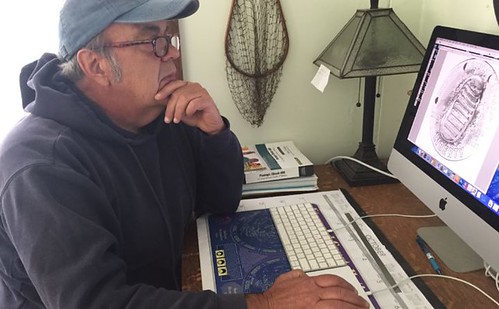
PREV ARTICLE
NEXT ARTICLE
FULL ISSUE
PREV FULL ISSUE
APOLLO 11 COIN DESIGNER GARY COOPERLocal newspapers are a great source for information on coin artists. A Bangor, ME publication interviewed Apollo 11 coin designer Gary Cooper. -Editor  Gary Cooper of Belfast was just a teenager on July 20, 1969, when he watched, transfixed, as Apollo 11 astronaut Neil Armstrong took his historic first step on the moon. “The whole world had joy over it,” the graphic artist and sculptor said this week, wiping tears from his eyes at the powerful memory. “That footprint wasn’t Armstrong’s footprint — it was everybody on Earth’s at the time. I remember the moment. We actually landed on another world.” So when the U.S. Mint announced a competition to design a commemorative coin to mark the 50th anniversary of the Apollo 11 mission, Cooper knew right away what his entry would be. Last week, officials at the Mint announced that his sculpted design of the photograph of Armstrong’s footprint in the lunar dust would be featured on the special coins. For the Maine artist, it isn’t just an ordinary commission, but rather an honor and the culmination of a lifelong dream. “I’ve been a coin collector ever since I was 11 years old,” he said. “From an early age I dreamed of doing a design for a U.S. coin.” Cooper, who believes he was named after the actor although his mother always denied it — “I was born the year “High Noon” came out,” he said — first started trying to achieve that dream when he was in high school in Greenwich, Connecticut. That’s when he wrote a letter to the director of the U.S. Mint, offering to help design the Eisenhower dollar coin. The director did write back, although he politely declined the teen’s offer. But Cooper, who moved to Maine in 1988, was undaunted. For the past 20 years, he has submitted designs to the Mint in hopes that one would be chosen for the Sacagawea dollar, the Maine state quarter and others. But none made the cut. That changed last November, when he received the news he has been waiting many years to hear. It seemed impossible. “I didn’t really believe it,” Cooper said. But it was true. The design he had toiled over for many hours using a 3D design program on his computer would make its way to the obverse side of four coins: a $5 gold coin, a standard-size $1 silver coin, a half dollar clad coin and a 5-ounce, heavier-than-usual $1 silver proof coin. “It was a delight to see him finally get one,” his wife, Marcia Cooper, said, adding that not everyone understands how hard it is to sculpt a lifelike 3D design on the computer. “What people don’t realize is that you don’t just push a button. It’s literally placing each pixel in position. It’s excruciating and painstaking.” Cooper has used the process before to sculpt memorial plaques that hang in the Maine State House Hall of Flags and to honor Maine female veterans, Maine Vietnam veterans, Maine Korean veterans and Maine World War II veterans. After the design is done, a precision model is created using a computer numerical control, or CNC, machine. This is essentially what will happen with the U.S. Mint coin design, too, with the first coins scheduled to go on sale at noon Jan. 24, 2019. The Mint will announce the coin prices ahead of the sale date. To read the complete article, see: Wayne Homren, Editor The Numismatic Bibliomania Society is a non-profit organization promoting numismatic literature. See our web site at coinbooks.org. To submit items for publication in The E-Sylum, write to the Editor at this address: whomren@gmail.com To subscribe go to: https://my.binhost.com/lists/listinfo/esylum All Rights Reserved. NBS Home Page Contact the NBS webmaster 
|